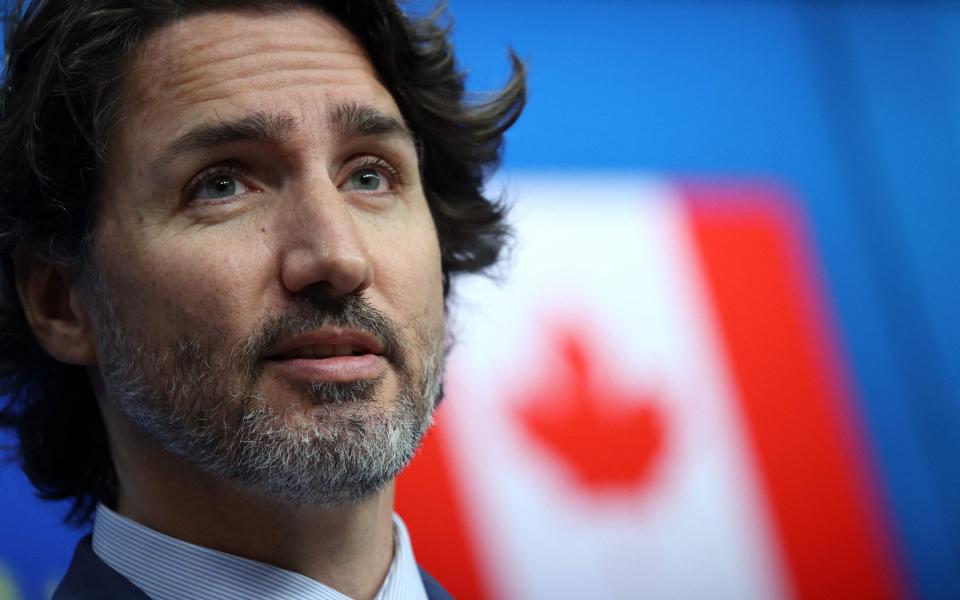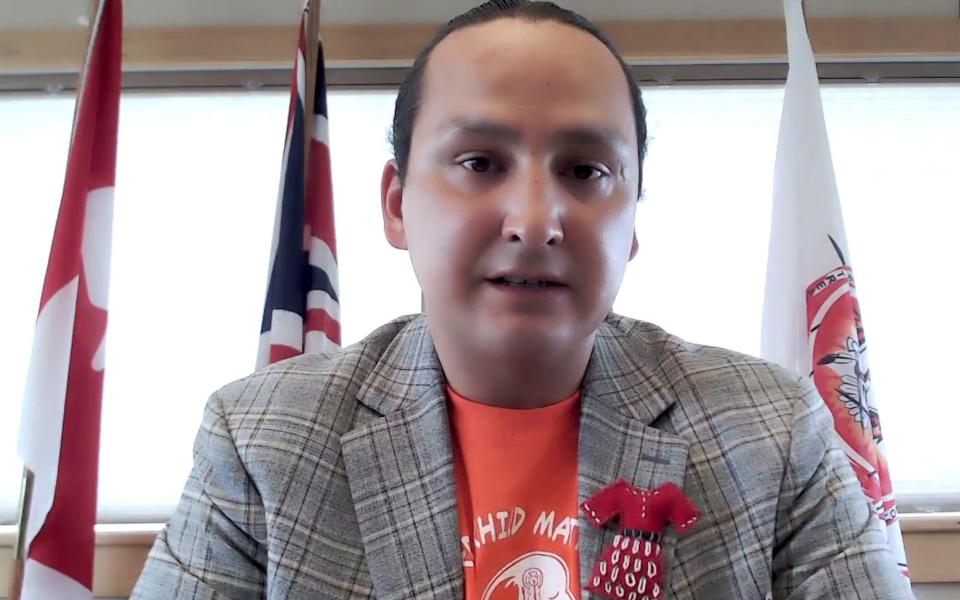Remains of 751 people found in unmarked graves at former Canadian schools

- Oops!Something went wrong.Please try again later.
The remains of 751 people, mainly indigenous children, have been found in unmarked graves on the site of a former Catholic residential school in Canada.
They were discovered on the grounds of the Marieval Indian Residential school in Saskatchewan less than a month after the bodies of 215 children were uncovered on the site of another defunct Catholic school at Kamloops in British Columbia
The grim discovery sent renewed shockwaves through a country which is still coming to terms with evidence of widespread abuse of the country’s indigenous population revealed by the Kamloops mass grave.
Canada’s 1.7 million indigenous citizens represent 4.9 per cent of the total population and their historic treatment is seen as a scar on the country’s history.
Canadian prime minister, Justin Trudeau, said he was deeply saddened by the discovery of the unmarked graves.
He told the country’s indigenous population that "the hurt and the trauma that you feel is Canada’s responsibility to bear."

It is unclear how many of the bodies found in Saskatchewan belonged to children, Cowessess First Nation Chief Cadmus Delorme said.
The Cowessess First Nation commissioned a ground-penetrating search of the site within days of the Kamloops discovery.
Identifying the remains have been made more difficult by the removal of headstones by the church which ran the school.
"We didn't remove the headstones. Removing headstones is a crime in this country. We are treating this like a crime scene," he added.

Chief Delorme said he had been in touch with the Catholic church and was optimistic it would provide the records needed to identify the remains.
More graves are expected to be found in Saskatchewan, following the decision by the federal government to allocate 4.9 million Canadian dollars £2.9 million for further searches.
The Marieval and Kamloops schools were part of a network of establishments set up by the Canadian federal government designed to forcibly assimilate native children.

More than 150,000 children are estimated to have been sent to these schools where they were banned from following their cultural traditions or even speaking their own language.
In all, there were approximately 150 such schools which opened in the early 1880s. The last shut its doors in 1996.
Canada, which was set up a Truth and Reconciliation Commission in 2008 to investigate the schools, described the practices as “cultural genocide.”

Families were threatened with jail if they did not surrender their children to the schools where conditions were grim.
There were also allegations of malnutrition, physical, emotional and sexual abuse.
Thousands of children went missing from the schools. Some died, others just ran away.
Initially, it was estimated that 4,100 children disappeared from the schools.
Murray Sinclair, an indigenous former judge who led the commission, estimated that the true number could exceed 10,000.
“Canada will be known as a nation who tried to exterminate the First Nations,” said Bobby Cameron, Chief of the Federation of Sovereign Indigenous Nations, which represents 74 First Nations in Saskatchewan.
“Now we have the evidence, this is just the beginning."

